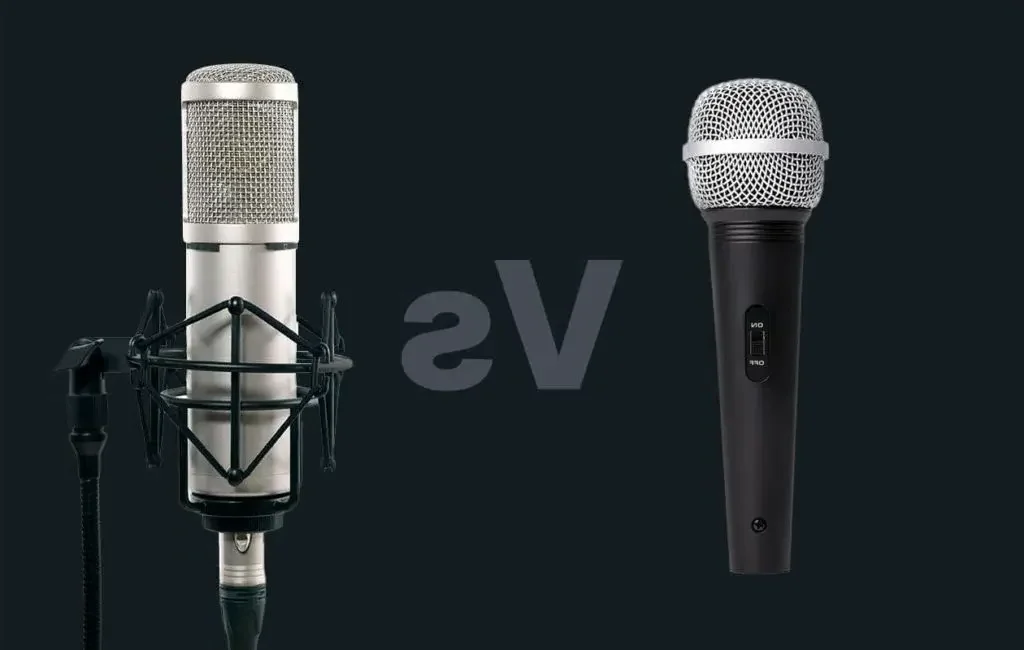In this digital era, being a content creator can be considered easy. In the sense that you can get streaming and recording peripherals that are of good quality, but with an affordable price too.
One of the peripherals needed for streaming is undoubtedly a microphone. This sound wave capturing tool can now be easily found on the market and has a relatively affordable price tag.
However, when you want to buy a new microphone, you will be confused by the presence of two types of mics circulating in the market today. The types of mics referred to are condenser and dynamic.
Key Differences between Condenser and Dynamic Microphones that you Need to Know
The fundamental difference between the two types of mics lies in their usage. Condenser and dynamic mics are intended for two different use cases and produce different sound qualities.
Condenser Microphone that is more sensitive

This type of mic is probably better known among streamers. Apart from being more suitable for gamers, the capture power of this mic is more sensitive and can capture even small sounds. Condenser mic types can also record audio with a wider frequency range, with low, mid, and high ranges. Condenser mics also have an initial sound or transient that is more captured.
Condenser mics use two plates as a diaphragm. These two plates function to receive sound vibrations. However, this type of mic requires a voltage so that it can convert the vibrations received by these thin plates into electromagnetic waves.
Because this type of mic is more sensitive, its use is slightly more difficult because you need a noise-free environment. Of course, you need to arrange your room to minimize echo, which leads to buying sound-absorbing foam so that the resulting sound does not bounce back.
Condenser mics are also more susceptible to damage, especially if they fall. So, maintenance for this type of mic needs to be more considered compared to dynamic mics. However, the price of this type of mic is much more expensive than dynamic types.
There are various sound directions that can be captured by this type of mic, including:
-
Cardioid

The Cardioid polar pattern means that this mic only prioritizes sound sources coming from the front. So, this narrower sound angle can reduce the sound from the opposite direction from being recorded.
-
Omnidirectional

As the name implies, this polar pattern has a recording angle of wave that is not focused and spread 360 degrees. So, sounds from any direction will be recorded. This type is suitable for recording sounds from one room, such as for podcasting.
-
Supercardioid

Actually, this type is a narrower version of the Cardioid mic. This type has a slightly narrower sound-capture angle of 150 degrees. So, the mic’s positioning should also be considered carefully if you want the sound to be better heard.
Dynamic Mics, Suitable for Outdoor Use

Unlike condenser types, dynamic mics are better at recording mid-frequency sounds. So, most of this type of mic is used for podcasts or live streams that mainly record human voices. The inside of this mic resembles a speaker component with a magnet and coil inside. It captures vibrations and converts them into electrical voltage. Therefore, this type of mic requires strong vibrations to move the vibration-capture part. So, it can be said that this type of mic is not as sensitive as the condenser type.
Because it is not sensitive, the distance between the mic and the mouth must be closer because it needs strong vibrations for perfect results. The sound that can be captured is also only around the mid-range. But because of its less sensitivity, you don’t need a completely silent room to get good results.
However, the advantage of this type of microphone lies in its durability. So you don’t need special care when using this type of microphone. The price offered is also relatively more affordable compared to condenser microphones.
Which One Should You Choose?

Now that you know the difference between dynamic and condenser microphones, it’s time to choose which type is right for you. Choosing a condenser or dynamic microphone really depends on your needs. If you use a microphone a lot for indoor purposes, then a condenser microphone is more suitable for you. Because the high sensitivity level allows the condenser type to capture more background noise which can result in a bad outcome.
But if you use a microphone outdoors, such as for live events on stage, then the dynamic type is definitely more suitable for you. With this microphone, you no longer need to worry about background noise getting in because this type of mic is not sensitive.

